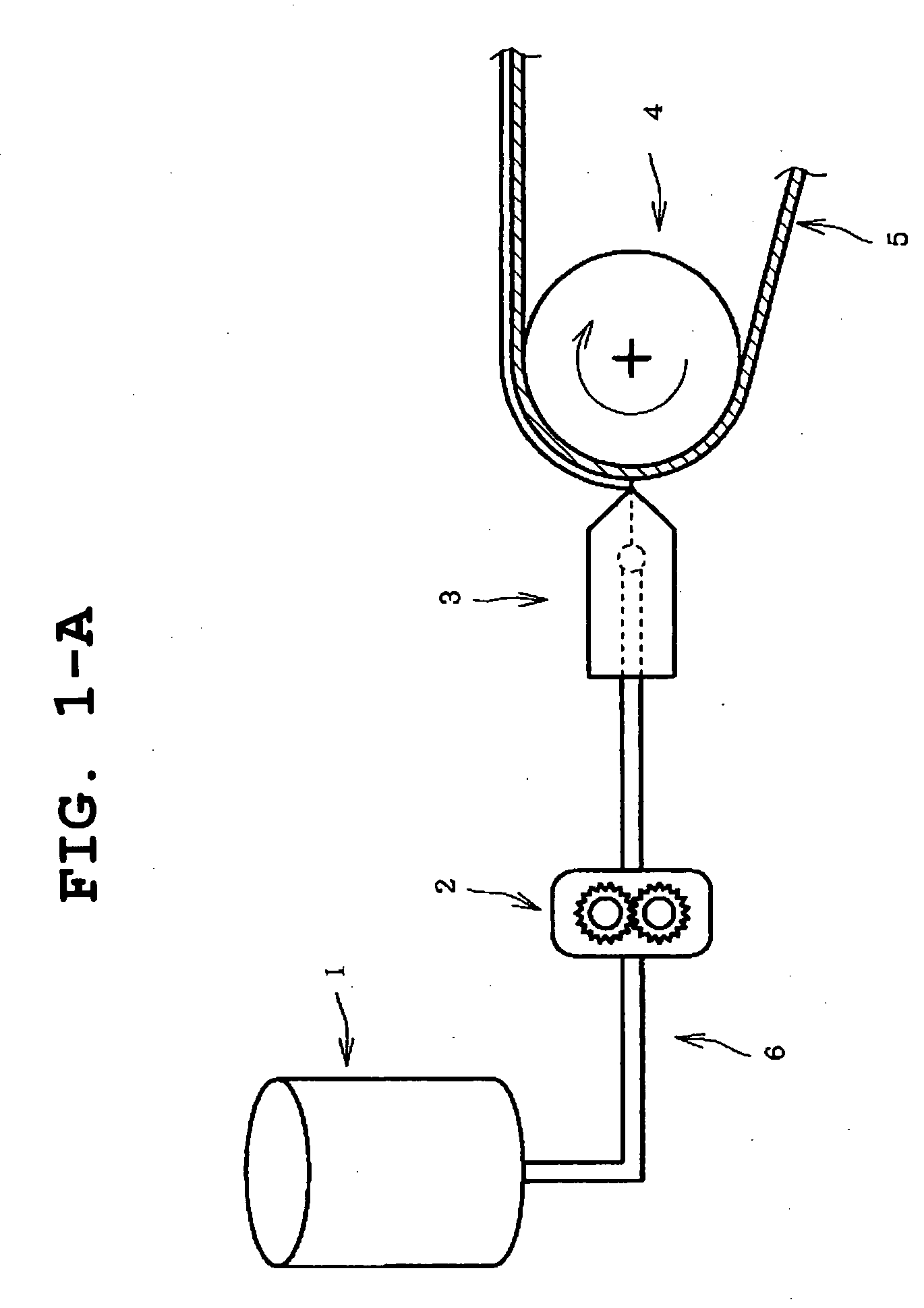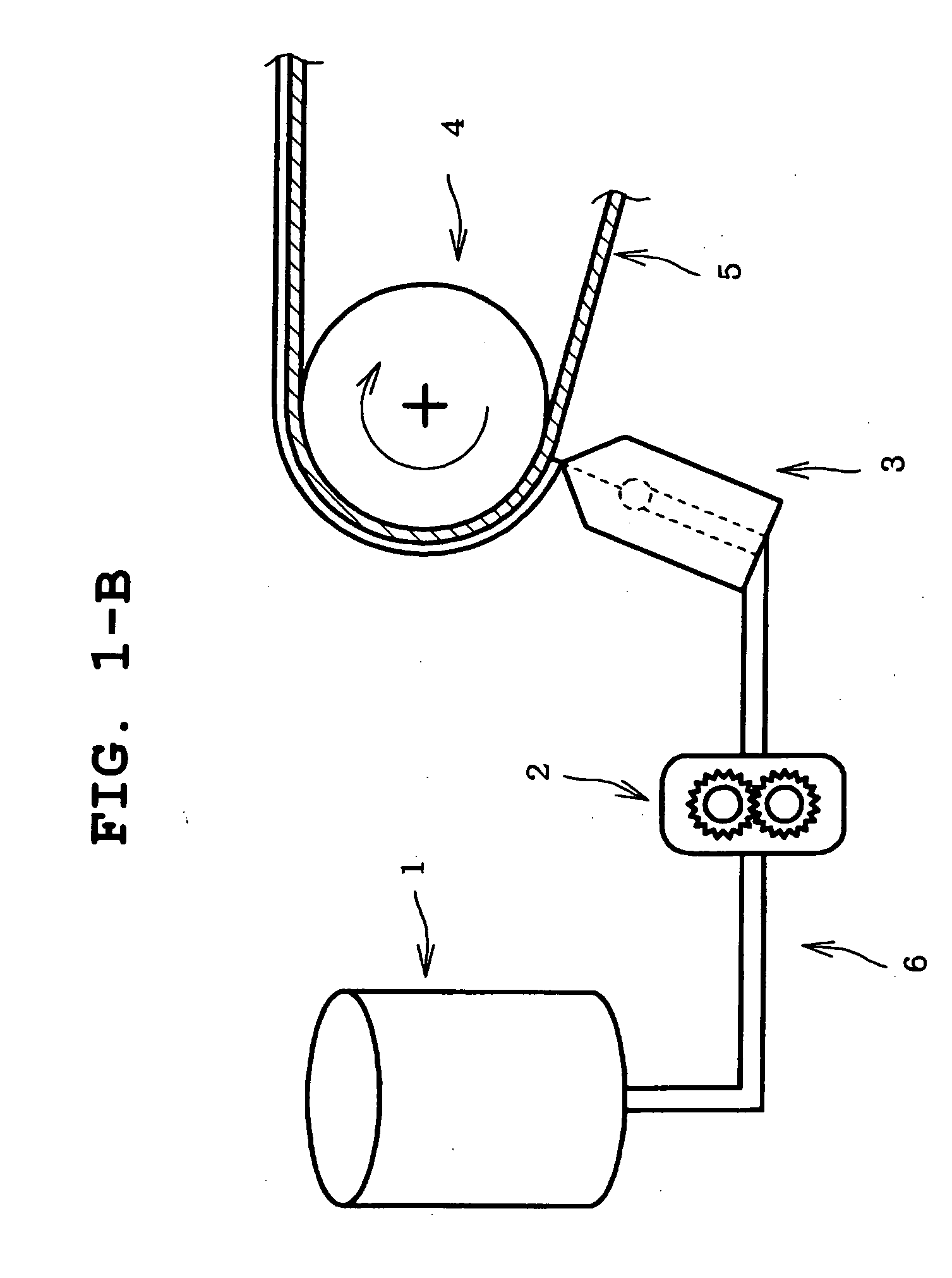Nicotine transdermal preparation and production method thereof
- Summary
- Abstract
- Description
- Claims
- Application Information
AI Technical Summary
Benefits of technology
Problems solved by technology
Method used
Image
Examples
example 1
[0112] Under a nitrogen atmosphere, 2-ethylhexyl acrylate (95 parts), acrylic acid (5 parts), ethyl acetate (100 parts) and benzoyl peroxide (0.2 part) were reacted in a separable flask equipped with a refluxing condenser, a stirrer, a thermometer, a dropping funnel and a nitrogen inlet tube at 60° C. for 15 hr to give an adhesive solution (to be abbreviated as Acryl 1).
[0113] The obtained adhesive solution was measured out in an amount corresponding to adhesive solid content of 59.92 parts and placed in a reaction container. Isopropyl myristate was added to the reaction container in 40 parts relative to the adhesive solid content, CORONATE HL (manufactured by Nippon Polyurethane Industry Co., Ltd.) was added as a crosslinking agent in a proportion of 0.08 part (0.14% of the adhesive), and the mixture was thoroughly stirred.
[0114] The obtained solution was applied to a peel treated surface of a polyethylene terephthalate film release liner having the peel treated surface on one si...
examples 2-4
[0116] Under a nitrogen atmosphere, 2-ethylhexyl acrylate (72 parts), N-vinyl-2-pyrrolidone (25 parts) and acrylic acid (3 parts) were charged in a flask, azobisisobutyronitrile (0.3 part) was added as a polymerization initiator, and polymerization was started. By adjusting the stirring rate and the outer bath temperature, and dropwise addition of ethyl acetate, the bath inner temperature was controlled to 58-62° C., and a polymerization reaction was carried out to give an adhesive solution (to be abbreviated as Acryl 2).
[0117] In Examples 2, 3 and 4, as shown in Table 1, the above-mentioned adhesive solution was measured out in an amount corresponding to an adhesive solid content of 69.79, 59.82 or 49.85 parts and placed in a reaction container. Isopropyl palmitate was added to the reaction container in a proportion of 30, 40 or 50 parts relative to the adhesive solid content, furthermore ALCH (manufactured by Kawaken Fine Chemicals Co., Ltd. aluminum ethylacetoacetate diisopropyl...
examples 5-8
[0119] 2-Ethylhexyl acrylate / vinyl acetate / 2-hydroxyethyl acrylate=78 / 16 / 6 (weight ratio, DURO-TAK2196, manufactured by National Starch & Chemical Company, to be abbreviated as Acryl 3) was measured out in an amount corresponding to the adhesive solid content of 79.68, 69.72, 59.76 or 49.80 parts and placed in a reaction container. Coconad MT (manufactured by Kao Corporation, caprylic.capric triglyceride) was added to the reaction container in a proportion of 20, 30, 40 or 50 parts relative to the adhesive solid content, ALCH (manufactured by Kawaken Fine Chemicals Co., Ltd. aluminum ethylacetoacetate.diisopropylate) as a crosslinking agent was added 0.4% of the adhesive and the mixture was thoroughly stirred.
[0120] The obtained solution was applied to a peel treated surface of a polyethylene terephthalate film release liner having the peel treated surface on one side to a thickness after drying of 80 μm, and dried at 70° C. for 2 min and 90° C. for 2 min to give an adhesive layer....
PUM
| Property | Measurement | Unit |
|---|---|---|
| Fraction | aaaaa | aaaaa |
| Time | aaaaa | aaaaa |
| Angle | aaaaa | aaaaa |
Abstract
Description
Claims
Application Information
 Login to View More
Login to View More - R&D
- Intellectual Property
- Life Sciences
- Materials
- Tech Scout
- Unparalleled Data Quality
- Higher Quality Content
- 60% Fewer Hallucinations
Browse by: Latest US Patents, China's latest patents, Technical Efficacy Thesaurus, Application Domain, Technology Topic, Popular Technical Reports.
© 2025 PatSnap. All rights reserved.Legal|Privacy policy|Modern Slavery Act Transparency Statement|Sitemap|About US| Contact US: help@patsnap.com



